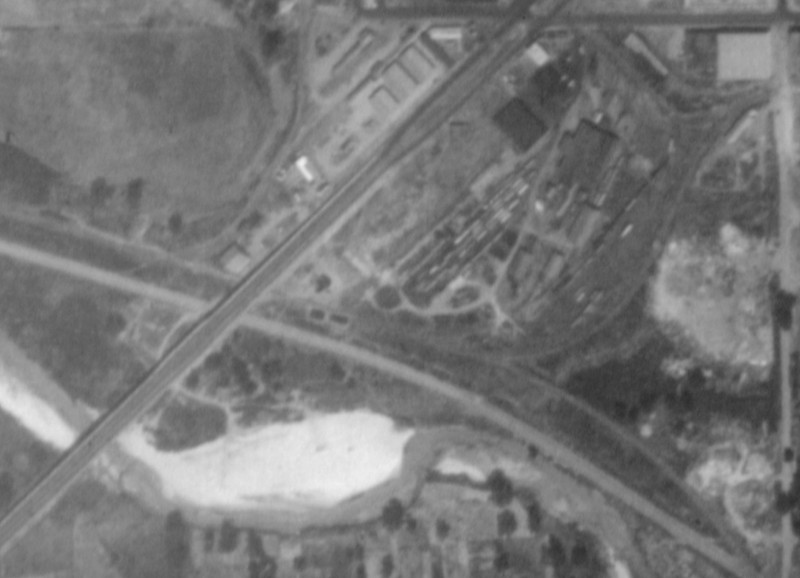Sandy Bend
Introduction
Text-to-speech Audio
Prior to the 1930s, the North Canadian River was full of large bends as it flowed through the city, unlike the straightened and controlled channel it is today. One such bend was Sandy Bend which was a loop that had cut itself off from the rest of the river, essentially making it a large circular pond. Sandy Bend was popular among the children in the Black enclave of West Town, including Ralph Ellison and Jimmy Stewart, who were excluded from using segregated swimming pools.
Images
Aerial View of Sandy Bend, 1937

Backstory and Context
Text-to-speech Audio
Ellison often made the distinction that he grew up in the southwest and not the “deep South,” but Oklahoma City shared with the deep South, Jim Crow, the KKK, lynchings, and segregation. As with amusement parks and zoos, swimming pools were off limits to Black children in the city. For Ellison and his friend Jimmy Stewart, specific locations along the North Canadian River near Stewart’s home in West Town offered an opportunity to cool down during hot, Oklahoma summers. Stewart later described the Sandy Bend section of the river where he and young Ralph used to swim as “Gargoly.” “It was a swimming place, you see…It connected to the river right here in this area. It was the only place that you had in Oklahoma City for Black people to swim. They didn’t allow you to swim at Spring Lake [amusement park] or any other place. Gargoly was a distinct part of the fife of Black kids here in Oklahoma City.”
Sources
Perry, John. Deep Second Still Lives In Dreams, The Oklahoman. January 8th 1993. Accessed January 29th 2022. https://www.oklahoman.com/article/2417719/deep-second-still-lives-in-dreams.
